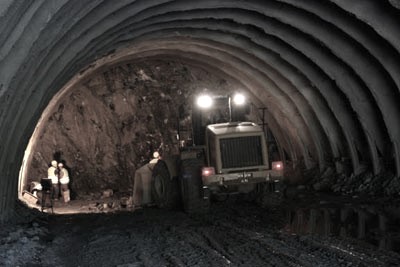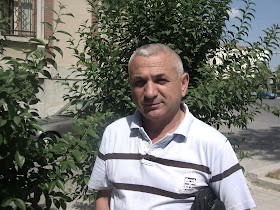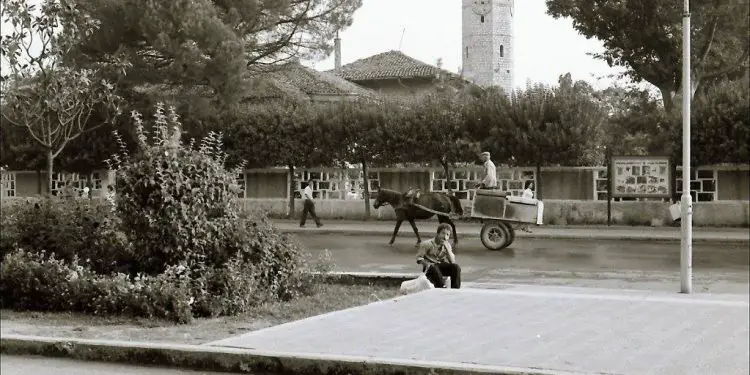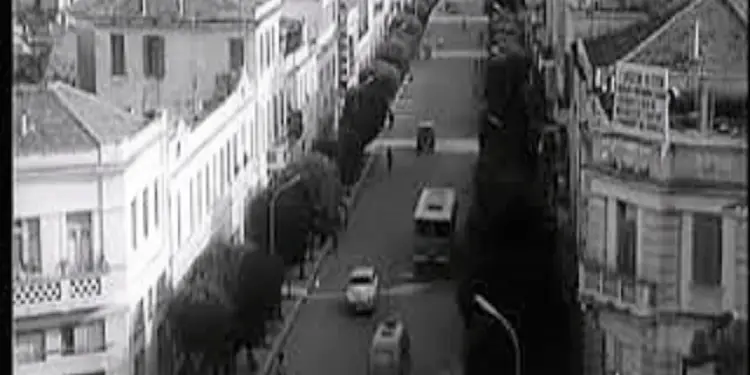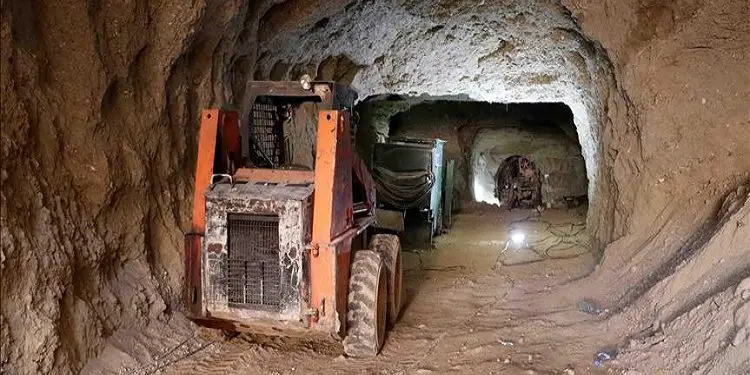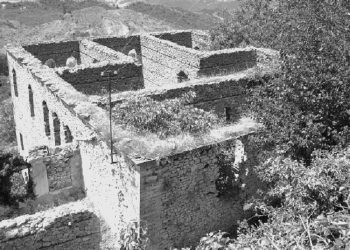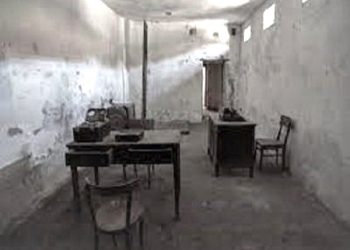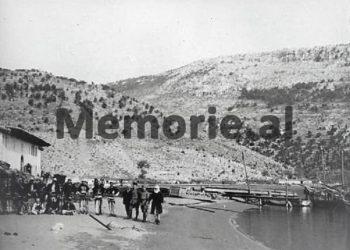By Mark Brunga
-How was the “underground dungeon” designed in Communism, in times of war?-
Memorie.al / “The underground city, consisting of special tunnels built at the foot of the hills, would withstand attacks from outside or natural disasters. The underground bread factory was calculated to supply bread to the city of Durrës with over 80 thousand inhabitants. Above the “Stan” neighborhood, the first giant tunnel was built as a shelter for the parking of more than 300 vehicles, while the hospital would have a capacity of 500 beds.
In the last 10 years of the communist dictatorship in our country, when the previous regime seemed unlikely to change the course it had started immediately after liberation, additional measures were taken to successfully deal with “enemy attacks” from abroad. The goal was that Albania; to withstand military attacks, atomic bombs, but also natural disasters, which could cause significant economic damage and paralyze normal life. At the beginning of the 80s, the Council of Ministers charged a special directorate, that of Civil Defense, for the construction of tunnels and underground dwellings, which would serve in times of emergency to help the population.
Endless tunnels began to be built throughout the country, which have cost staggering amounts of financial funds. The funds for their construction were allocated from the state budget, but also from the enterprises in the districts, for which the executive committees made the corresponding plan. It is redundant to say that the companies were convinced to complete the “extra” plan, which was required for the directorate. A large number of tunnels, or underground dwellings, were also built in Durrës, which seemed to have designed the underground Durrës, which would function in case of war.
Lutfi Shehu, ex-soldier (graduated in the former Soviet Union), and chief of Civil Emergencies in the Durrës district for 12 years, tells how the projects were drawn up in the early 80s and the cessation of work after 10 years , when pluralism was established in our country. Lutfi Shehu, now 82 years old, shows that the constructions that were made, starting from 1981, until 1991, are constructions designed to withstand even the most powerful blows, which could come from different ways. “These constructions had a specific mission,” he says, “which means that life must continue even in times of war or disasters.”
The ten tunnels that would keep the life of the city alive in case of war
“The place for the construction of the underground tunnels was chosen to be at the foot of the hills of the city. On the hill of Vila, there are two such. Above the ‘Stan’ neighborhood, the first giant tunnel was built as a shelter for parking more than 300 vehicles. This giant tunnel, which is several meters deep in King Zog’s villa, is made up of 6 other tunnels. Then, the tunnel was built that would serve as the command post of the district. It was built on the hill of Kokomane and is a large building, which consisted of 85 small rooms, mostly adapted as office premises. This building is finished and currently its entrance is closed, by means of a heavy concrete door.
The third construction, which can be considered the largest, is the underground hospital. It was built near the former tank department and was designed with a capacity of 500 beds in total. For this hospital, the opening of the tunnel, its concreting, the creation of facilities for all services, as well as the construction of the water tank, which would supply the hospital’s needs for a month, were completed. The hospital is considered unfinished, as the plumbing, electrical network and the aspiration and conditioning system are missing. The fourth object is the refrigerator. It was built in the place called; “Depoja e Vangjeli” has a food storage capacity of 300 tons.
The refrigerator was used for some time in the late 80s. Cheese, meat, vegetables and greens were kept there. It is in working condition, with all the equipment and is located in front of the Navy Command. Across the lake located in this place, there are the underground warehouses of the Trade of that time. It is a giant tunnel, divided into many pockets within it. Another object built in these years was the cow stable, with a capacity for breeding 500 heads. This tunnel was built under the hill, where the anti-aircraft battery used to be, to the tank department. There are finished tunnels for storing cows and equipped with ventilation and everything necessary.
The bakery was located next to the cow stable. This too was largely completed and its operation was tested, but only the chimney that would rise above the ground remained unbuilt. This factory was calculated to supply bread to the city of Durrës, with over 80,000 inhabitants. Close to the factory was also built the brick factory, concreted and equipped with the necessary tools.
On the hill of Vila, two more tunnels were built, which would serve as a tailoring and shoemaking department, in times of war or disasters. All these tunnels were expected to spring to life as soon as the alarm was given by the high command, which also had its place of refuge, underground. Most of them today lack only the ventilation and aspiration system and can be put to work for different purposes”.
Material used and work stoppage in 1991
Lutfi Shehu says that; for the construction of these important buildings, the best quality iron and concrete that our country had at that time was used. The iron used in these tunnels was the same as that used for the Fierza hydropower plant, while the concrete was of brand 400 and above. The facilities in question were subordinate to the Civil Defense Directorate, which was subordinate to the Council of Ministers.
Their construction was done by the Civil Defense site, set up specifically for this work, but it was subordinated to the Municipal Enterprise as well. Regarding the funds for these constructions, each enterprise worked for the reserve fund, which went to provide millions of cubic meters of concrete and tons of iron. In this way, it was thought that the state budget would not be burdened, while this way of financing had caused that in these types of works, the crisis that had begun to knock on the communist state was not felt at all.
The site set up in Durrës consisted of about 60 workers, specialists and engineers. Technicians and workers have been highly qualified for underground interior works. They had gained experience in the construction of hydropower plants in Shkopet and Bistrica, and after that they came to Durrës. Regarding the construction technique, it must be said that it was not a modern technique. Excavator tractors were used to dig deep into the tunnels, which were provided by the army engineering department. The other stages of the work for the opening of the tunnels were carried out with baromines, explosions, explosions, etc.
At the beginning of the 90s, the work on their further construction was completely suspended, as the destinations of the enterprises changed, while the country entered a deep economic crisis.
The cost of construction and their adaptation to today’s conditions
It is not known how much it cost to open and build all the tunnels in Durrës. From an account that was made by the group that led the works at that time, only the underground hospital of Durrës, had cost about 7.8 million lek (old) of that time. If this amount is converted to the value of the dollar in the years of communism, it is calculated that the underground hospital alone cost 105 thousand US dollars.
Lutfi Shehu says already many years after the cessation of the works that the projects for their construction were taken from the Nordic countries, mainly Sweden and Norway. Then they were adapted and implemented for construction in Durrës and other areas of the country. Institute no. worked specially for these projects 2 of military works.
What can be done at this time, with these objects that have been left at the mercy of fate?
Former soldier Lutfi Shehu, to this question, answers that; the state can use them for storage, wine cellars, parking lots, factories and workshops of various types, mushroom growing complexes, etc. In 1991, when the work on their construction had just been stopped, there were requests from various entities to create greenhouse complexes there for growing mushrooms. Currently, it is not known which ministry has these constructions in inventory, which cost the state hundreds of millions of ALL at that time, since in many cases, houses were built at the entrances of these tunnels, or walls and various types of premises were built.
“At that time, the Council of Ministers, with efforts and effort, managed to create the Civil Defense regiment and did everything possible to equip this vital sector with the right tools, in cases of floods, fires, earthquakes or war. Today, there is no interest and the civil defense sector is not appreciated enough, at a time when in many countries, there is a separate Ministry of Civil Defense”, says Shehu.
The emergency situation of March 1987 in Shkodër and overcoming the situation
Lutfi Shehu, says that in March of 1987, a strong wind blew in the city of Shkodra. Fortunali caused 5-6 high-voltage electric poles, coming from the Vau i Deja hydropower plant, to fall in the Koplik area. This line supplied electricity to Shkodra and Lezha, and the fall of the poles due to the strong wind caused the above two cities to remain without power. Due to the incomplete measures that were taken to provide electricity on parallel roads, or with generators, Shkodra was left without bread.
The government in Tirana raised the alarm and in order to supply this city with bread, Durres was tasked with keeping the bakeries in working order for 24 hours. For nearly three weeks in Durrës, two additional bread plans were made, going to Shkodër, which in these difficult days, has also been supplied with bread from Shijaku, Kavaja and Lushnja partially. In this time of crisis, bread was also produced in the underground oven near the tank department, which was a good opportunity to test this oven created for times of war.
Today’s floods, proof of the lack of seriousness and lack of civil protection
The floods that are constantly recorded in Durrës and other areas of the country from the rain show that no one takes civil defense and emergencies seriously in such situations. Lutfi Shehu, says that at that time, it was unimaginable that flood prevention measures would be taken in November or December. They were taken in time, while it is so unthinkable, that the hydrovor would suffer a defect and the energy would be missing, so much so that Durrës would immediately be flooded. It is an object of special importance and together with the waterworks, their warehouses and hospitals; they must have independent lines for the supply of electricity. Memorie.al




